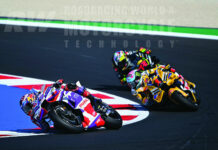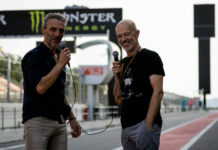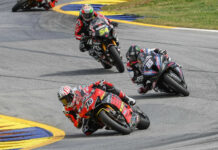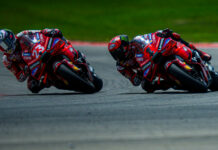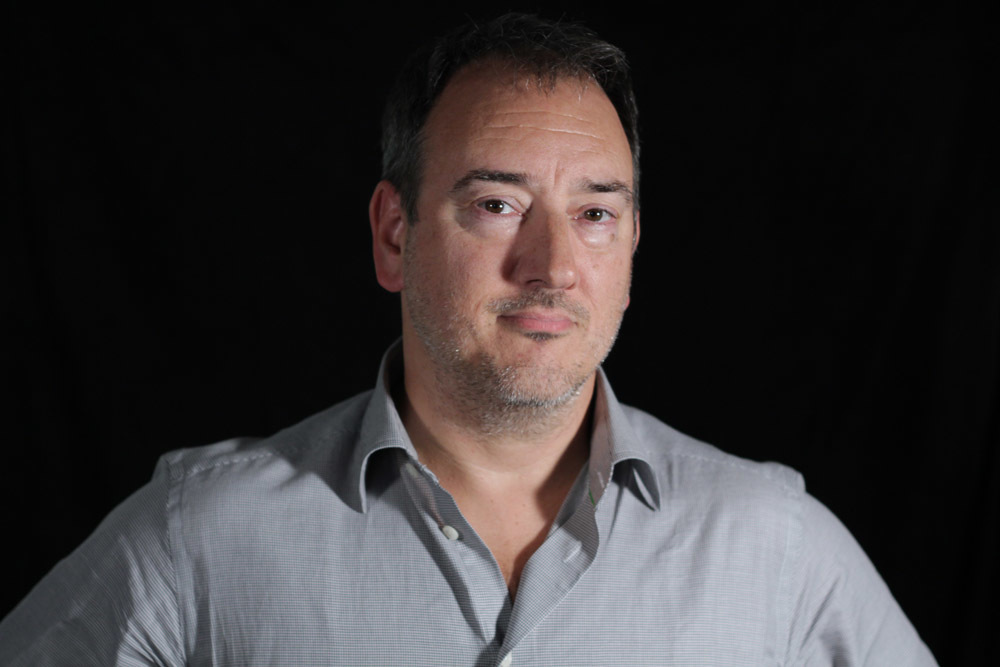New Classes, New Format, New Races: Reinventing AMA Pro Flat Track
AMA Pro Racing CEO Michael Lock: “You Have To Take The Sport To The People …”
By Michael Gougis
After taking the position as Chief Executive Officer of AMA Pro Racing for series owner Daytona Motorsports Group (DMG), Michael Lock took another position: That of a fan. For half of the AMA Pro Flat Track races this season, Lock sat in the grandstands, watching the evening’s racing proceed from beginning to end.
What he observed was one of the catalysts for a dramatic revision of AMA flat track racing for the 2017 season. The once-dominant racing discipline will feature a new class structure, new format for a race meeting, new races and the revival of a classic, all-American slugfest at the top of the card.
“If you think back to the 1980s, motorcycle racing really changed. Road racing came into its own as a glamorous sport. Motocross changed into Supercross. Somewhere along the line, flat track racing got left behind. And the pre-eminent sport right up to the 1970s that had launched the careers of all the legends suddenly got sidelined. It became more and more peripheral to the motorcycle industry,” Lock told Roadracing World.
“In the last 20 or 30 years, it kind of started to be … a sport by us, for us. Which is fine for amateur racing. But if we want to be a professional sport, if we want to put money in the pockets of the racers and make stars of them, we have to attract the outside world to us. And we have to speak to the outside world in a language that they understand.”
Lock has seen the industry and the sport from the top. A longtime motorcycle and automotive executive, Lock has served as CEO of Ducati North America and Triumph Motorcycles USA. AMA Pro Racing named him CEO in 2015, and he took a hard look at flat track, what it had become, and what could be done.
The big changes:
– The class structure for 2017 will be centered on machines, not riders. The current system required riders in both classes – GNC1 and GNC2 – to race Twins and Singles throughout the year. The headlining GNC1 riders raced Twins on miles and half-miles and Singles on short tracks and TT events. Riders in the supporting GNC2 class raced Twins on the miles and Singles everywhere else. Problem was, the factories that made the big headlining Twins (Harley, Triumph and Ducati all had machines in the top 10 at the Springfield Mile race in September) didn’t make a Single. The marketing and branding headaches are obvious.
“Last year, we had the irony of deciding our premier class championship with the guy who won the championship, Jared Mees, who is synonymous with Harley-Davidson, winning the championship on a Honda dirt bike! You can imagine that Harley-Davidson wasn’t exactly enthusiastic about celebrating that victory,” Lock says.
“It’s a rider-based class where the rider rides lots of different machines. That’s great. I can see how it developed. I get the logic. But it’s not commercially salable. And it’s not easily understood or explained to someone. It’s not possible to run a pro sport like that. You can’t get the sponsors, you can’t get the OEMs involved.”
And the GNC2 rules made it exponentially more difficult to race for that championship, he says.
“Our GNC2 class didn’t only (include) the 450cc Singles. You had to ride Twins at some rounds. You had to ride Singles at other rounds. You needed four bikes–or six bikes–to get into it. I thought, this is a completely unnecessary layer of complexity,” Lock says.
For 2017, the classes are simple. GNC1 is 650cc-990cc four-stroke Twins. GNC2 is 450cc four-stroke dirtbike-based Singles.
“We have to start the future by re-engineering the classes,” Lock says. “If we have those two classes and I can explain them to you in 10 seconds, we’ve made a good start.”
– The race program will shift to a progressive knockout formula as employed by virtually every other professional sport on the planet, Lock says. Currently, the fastest riders transfer to the main event by virtue of winning a heat race early in the program. They do not race again until the end of the night. From the vantage point of the fan, this was disastrous, Lock said.
“I’m coming to a race and I get to see Jared Mees and Bryan Smith, the super-cool guys, I get to see them for a few laps at the start of the evening, then I don’t get to see them again until the end of the night. It might be 10 or 11 o’clock! What kind of program is that?” he said.
The new knockout format will feature three heat races, which send the top 12 finishers from each to a pair of semis with 18 entrants. The top nine from each of those two semis go to the final.
“This is like every other sport in the world. It shouldn’t be radical, but it is radical. It is simple logic,” Lock says.
– In 2017, a new schedule will feature new venues and a more competitor-friendly calendar. The 18 races will be arranged in geographic groups, so racers will not be forced to crisscross the country multiple times. “It is the best schedule in living memory. The previous ones looked like they were put together by someone who enjoyed spending a lot of windshield time,” Lock says.
The new events will be held in horse racing facilities in metropolitan centers. Lock says the decline in horse racing attendance in the U.S. has opened the doors to world-class facilities that were built on an economic model of spectator attendance that simply does not exist anymore.
“All the new rounds that are coming in are prestige venues. You have to take the sport to the people. You have to go to metropolitan cities. It’s no good being two hours outside of (a major city),” Lock says. “Remington Park in Oklahoma City. Turf Paradise in Phoenix. The Red Mile in Lexington, Kentucky. These are beautiful, world-class facilities.”
There are other changes. The season-opener will be at Daytona again, but inside the main facility on a track laid underneath the Supercross track. Once Supercross is complete, that dirt will be scraped away and the underlying flat track surface revealed.
Lock also has negotiated a two-part video package. FansChoice.tv will continue to stream the events live. NBCSN will broadcast an hour-long program on Thursday nights, featuring the entire main race, as part of an evening dedicated to motorsport. The live streaming approach meets the needs of the hard-core, tech savvy fan who wants to watch it live, and the TV package brings the sport to a more casual but much broader audience. “You need both. One works because the other one works,” Lock says.
So 2017 will see a more fan- and sponsor-friendly class structure and race format, a more competitor-friendly calendar and the means to reach a bigger audience. The capper to it all: The return of Indian as a competitor. Indian Motorcycles is set to race its FTR750 flat track machine against Twins made by Kawasaki, Yamaha, Ducati and Triumph, but most importantly against Harley-Davidson. It is the reboot of a decades-long rivalry, and Lock says it is the catalyst to bringing audiences back to flat track racing.
“I’ve got an American story. I’ve got the two heavyweight brands, based in neighboring states,” Lock says. “Next year? Harley vs. Indian. Eighteen rounds. Factory teams. Duking it out in my sport.”


